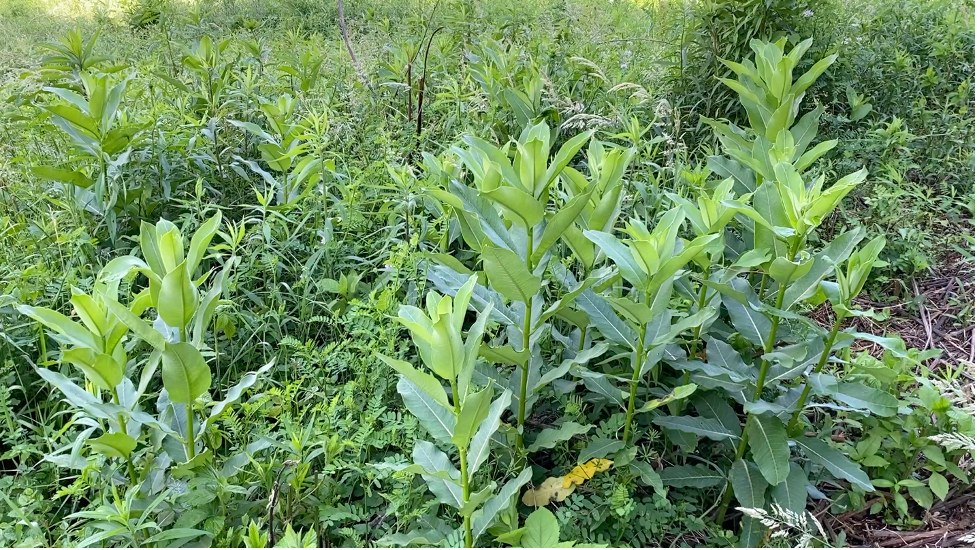Weed Control in Pastures
go.ncsu.edu/readext?793579
en Español / em Português
El inglés es el idioma de control de esta página. En la medida en que haya algún conflicto entre la traducción al inglés y la traducción, el inglés prevalece.
Al hacer clic en el enlace de traducción se activa un servicio de traducción gratuito para convertir la página al español. Al igual que con cualquier traducción por Internet, la conversión no es sensible al contexto y puede que no traduzca el texto en su significado original. NC State Extension no garantiza la exactitud del texto traducido. Por favor, tenga en cuenta que algunas aplicaciones y/o servicios pueden no funcionar como se espera cuando se traducen.
Português
Inglês é o idioma de controle desta página. Na medida que haja algum conflito entre o texto original em Inglês e a tradução, o Inglês prevalece.
Ao clicar no link de tradução, um serviço gratuito de tradução será ativado para converter a página para o Português. Como em qualquer tradução pela internet, a conversão não é sensivel ao contexto e pode não ocorrer a tradução para o significado orginal. O serviço de Extensão da Carolina do Norte (NC State Extension) não garante a exatidão do texto traduzido. Por favor, observe que algumas funções ou serviços podem não funcionar como esperado após a tradução.
English
English is the controlling language of this page. To the extent there is any conflict between the English text and the translation, English controls.
Clicking on the translation link activates a free translation service to convert the page to Spanish. As with any Internet translation, the conversion is not context-sensitive and may not translate the text to its original meaning. NC State Extension does not guarantee the accuracy of the translated text. Please note that some applications and/or services may not function as expected when translated.
Collapse ▲Weed Control in Pastures
What and Why?
As spring comes into full swing, pastures begin to grow. With new growth comes unwanted weeds. Weeds grow at a rapid pace than desired grasses, taking up the soil’s nutrients and shading the immature grasses from much-needed sunlight. The decrease in growth of desired grasses contributes to livestock not adequately growing and gaining, resulting in decreased profits.
Where?
Weeds thrive in areas where the soil is compacted or over. High traffic areas, holding pens, feeding, water, and shelter areas become the most densely populated with weeds. Once the weeds mature, they release seeds that spread to other parts of the pasture by wind, birds, or even on the hair or hooves of the livestock.
How and when to control?
The opportune time to control weeds is when the plants are in an immature stage of life when the weeds reach 4-6 inches in height for most species. At this stage, the weeds have leaf growth but are still vulnerable. I suggested that an herbicide be used that best fits the weed species, desired pasture species, and livestock operation. This stage typically occurs around mid to late April in this area. The proper timing does depend on the weather and temperature. If temperatures are lower, the timing may need to be late April or early May.
When timing is ideal, most herbicides are administered through a spraying technique. The herbicide is sprayed over all the species of grass and weed throughout the pasture. The herbicide then attacks the broadleaf species, killing the plant. It is essential to know what desired forage species are present in a pasture before choosing a herbicide. If the desired species is considered a broadleaf, the herbicide will attack this plant, too, eliminating it.
Benefits
Killing weeds in a pasture will allow the desired species of grasses to grow and thrive, providing livestock with much-needed nutrition. This optimal nutrition will increase the growth and gains of an animal, increasing its quality of product and profitability.
For additional information on weed species identification, spraying techniques, and available herbicides, please contact Michelle South, Area Agent, Agriculture – Livestock, at N.C. Cooperative Extension – Avery County Center (828-733-8270) or by email at michelle_south@ncsu.edu.




